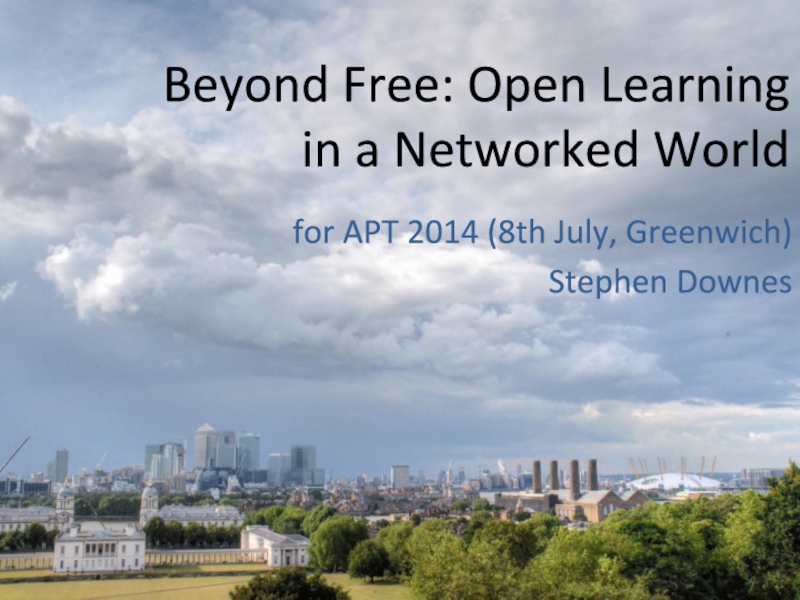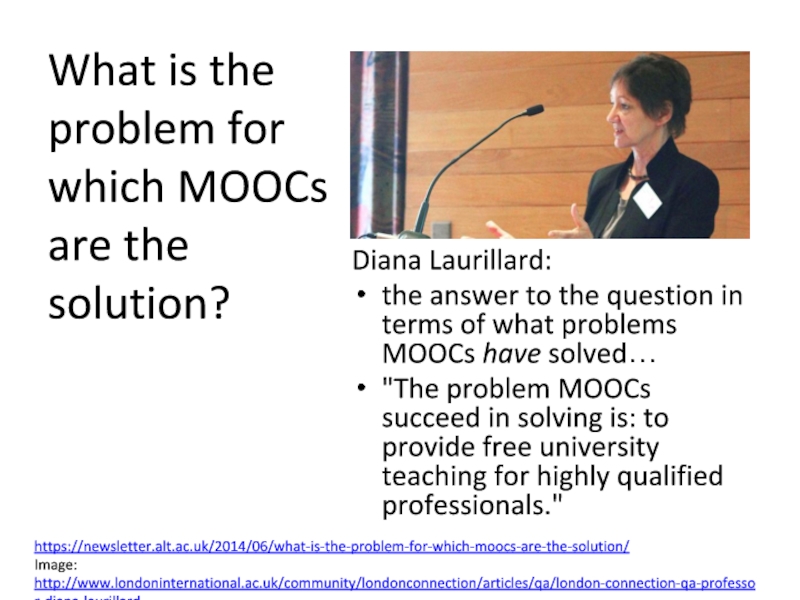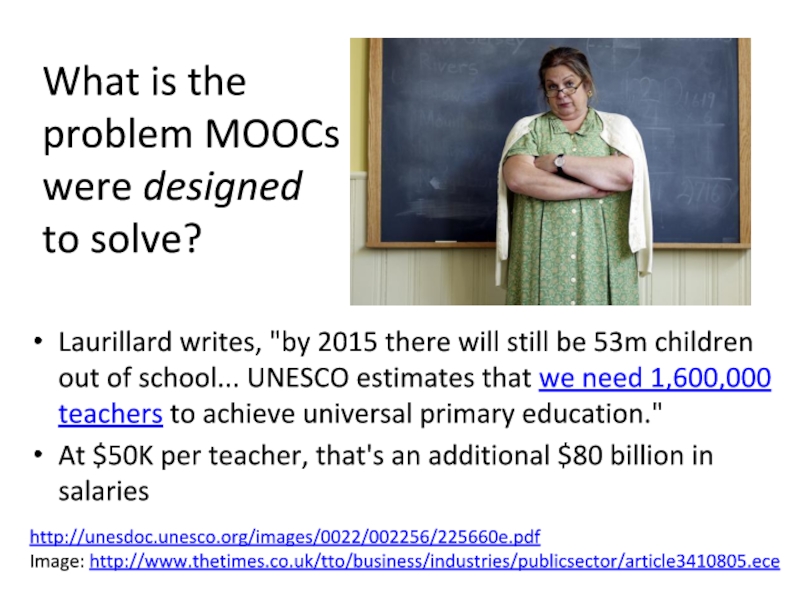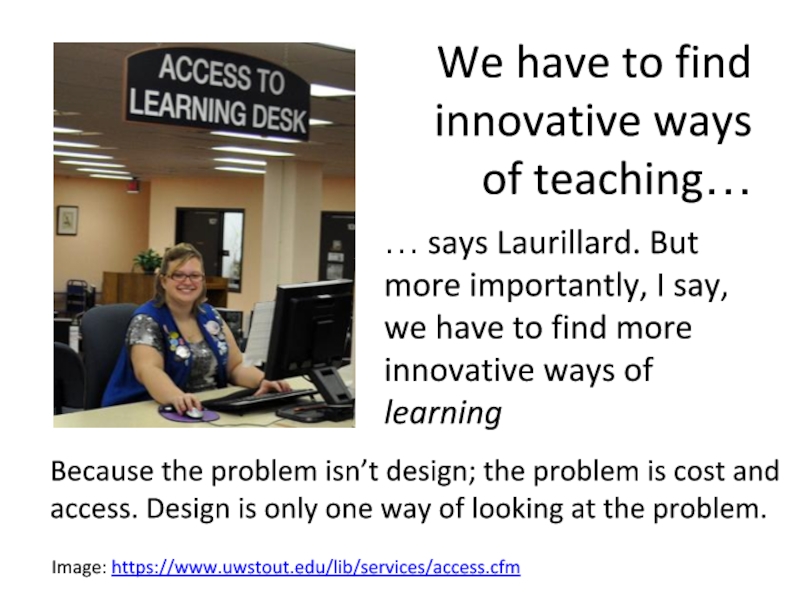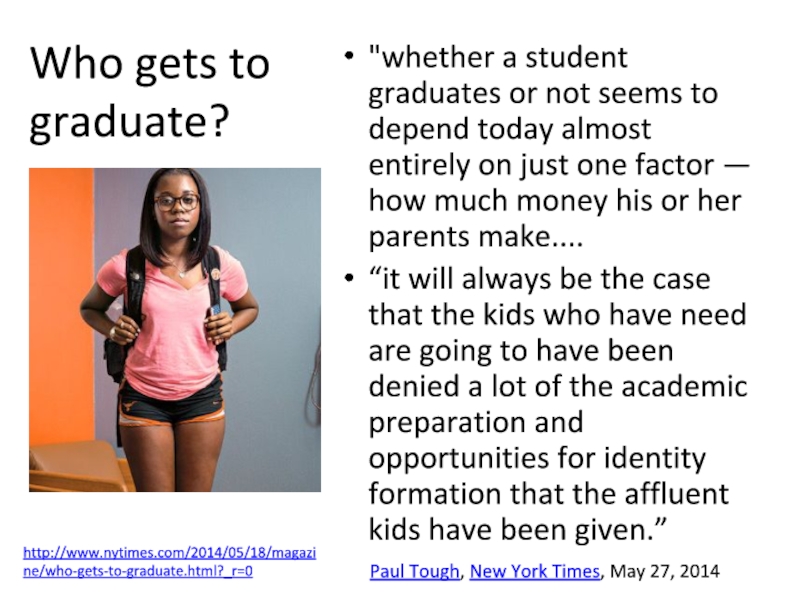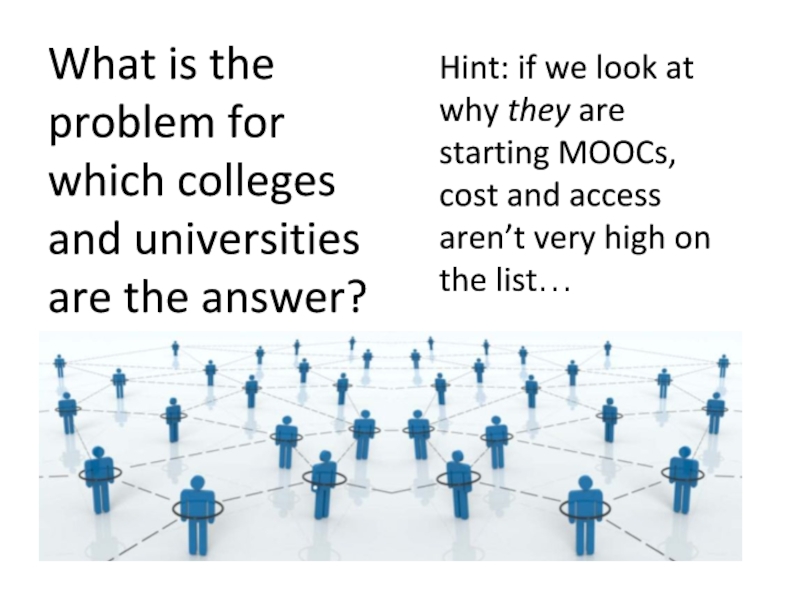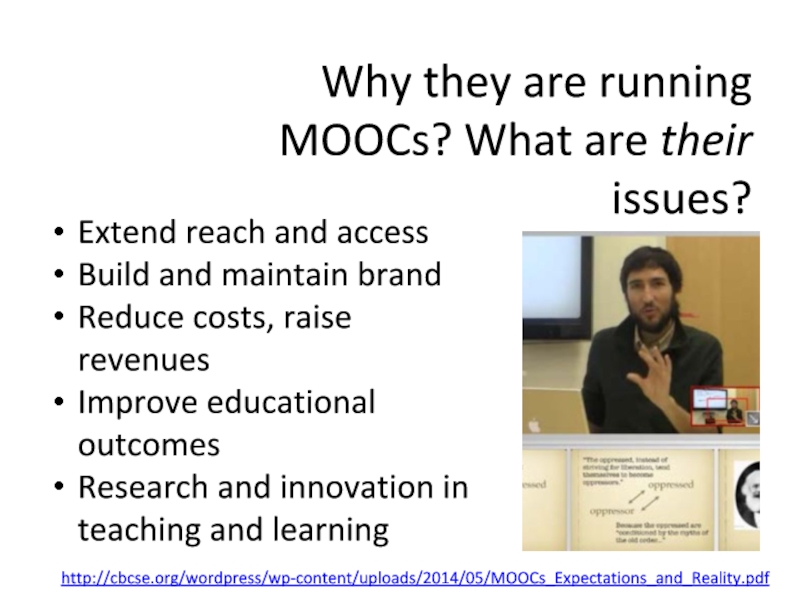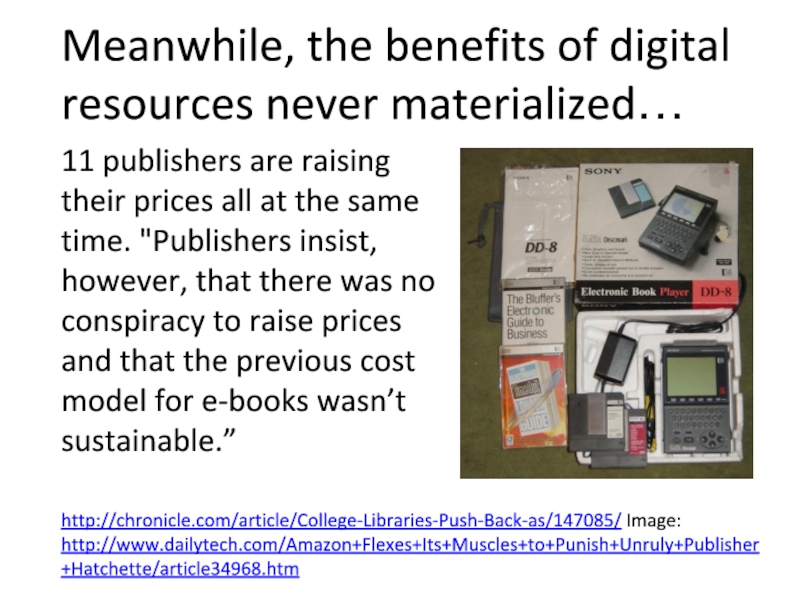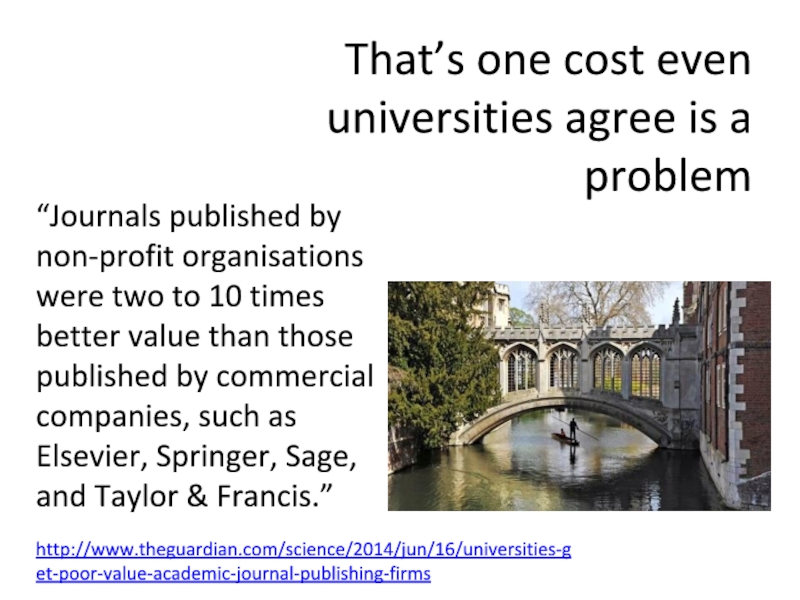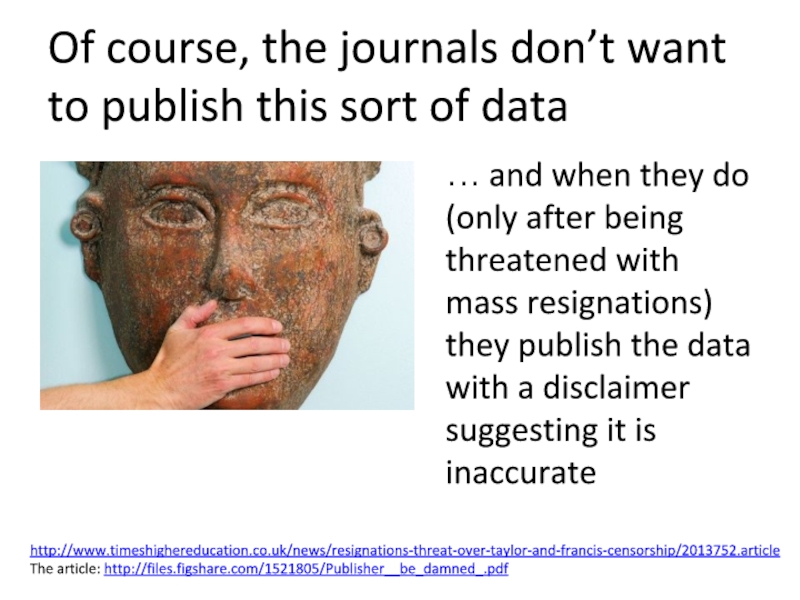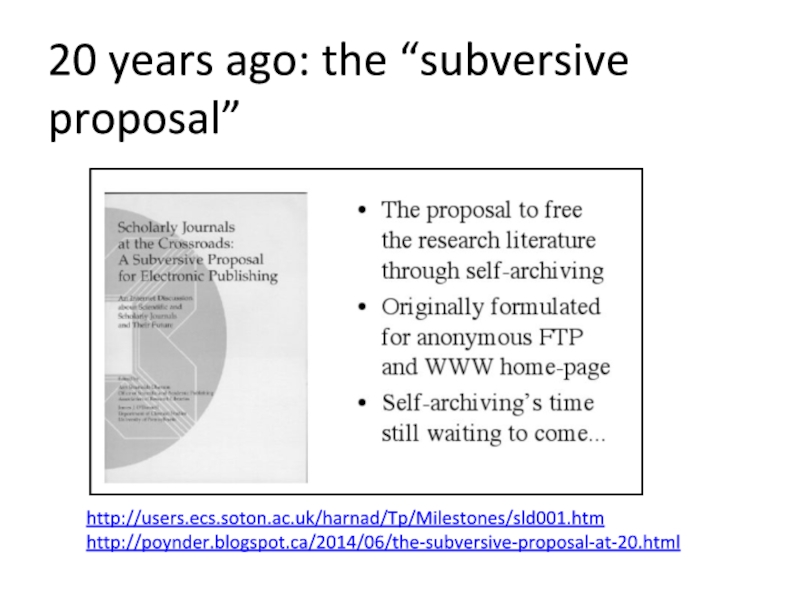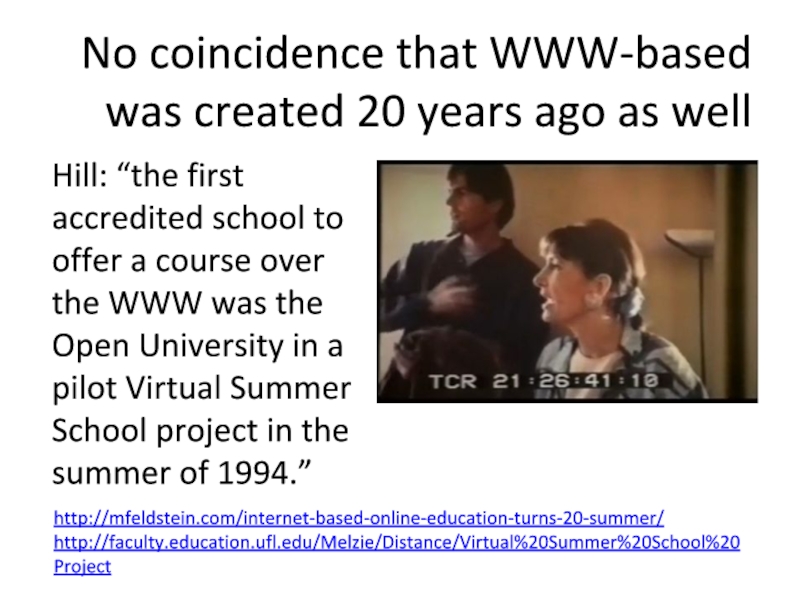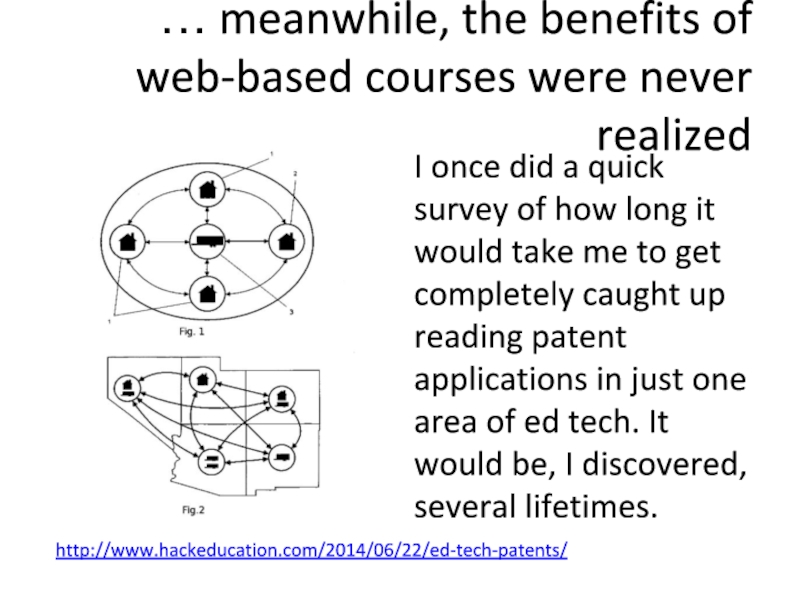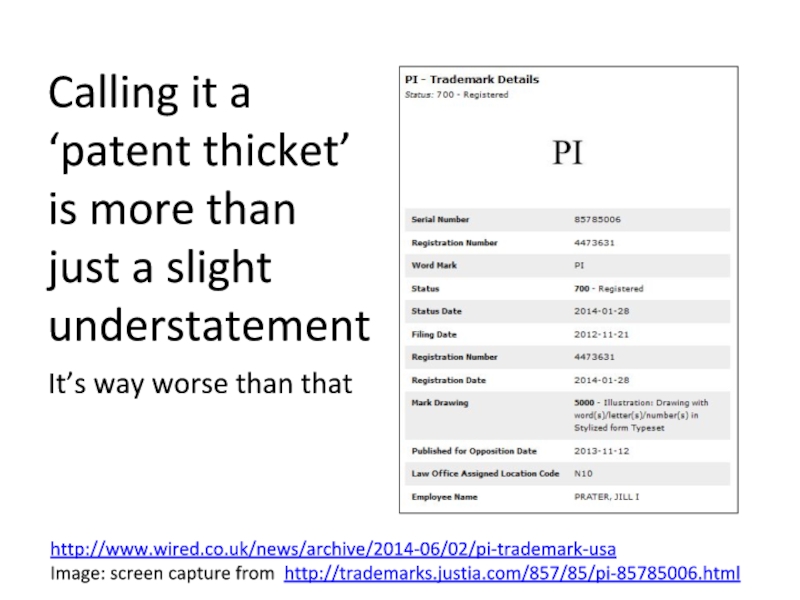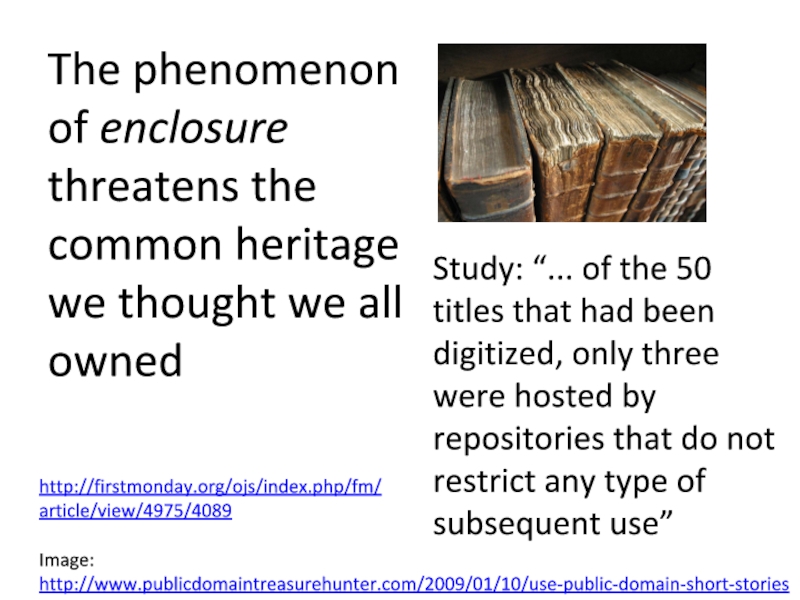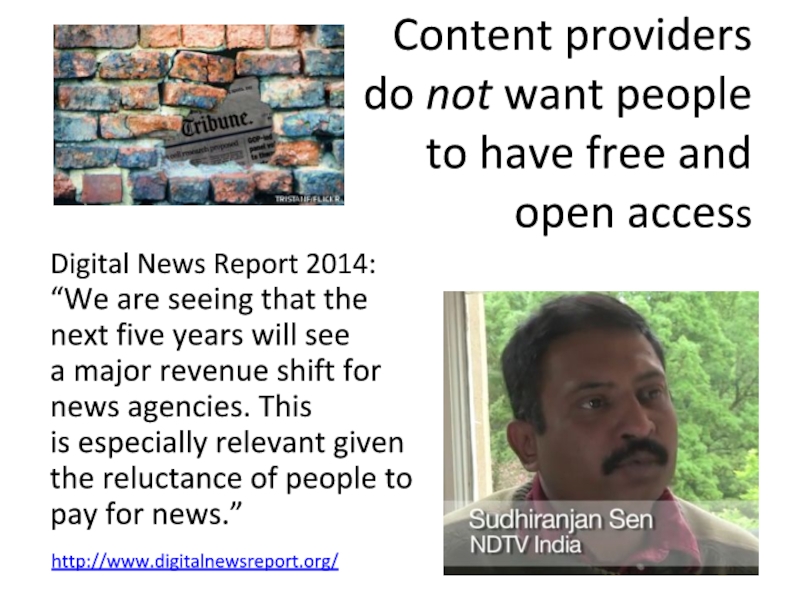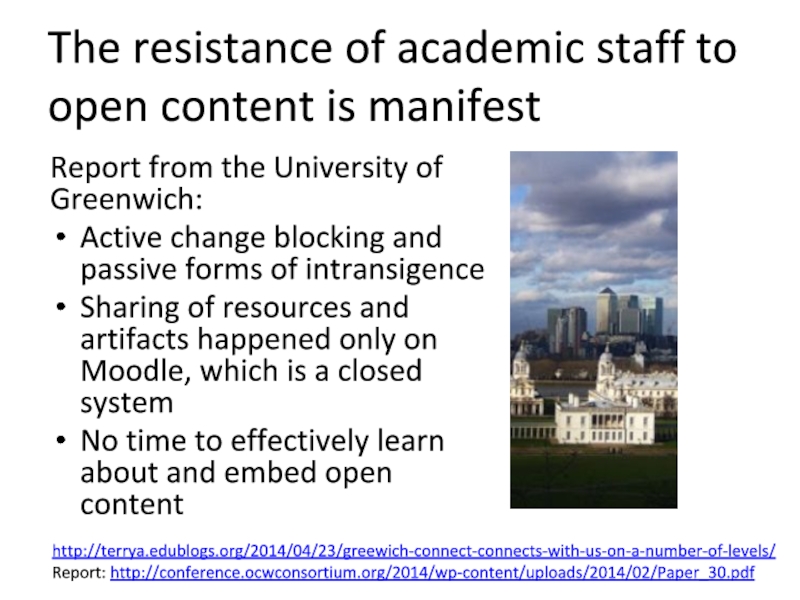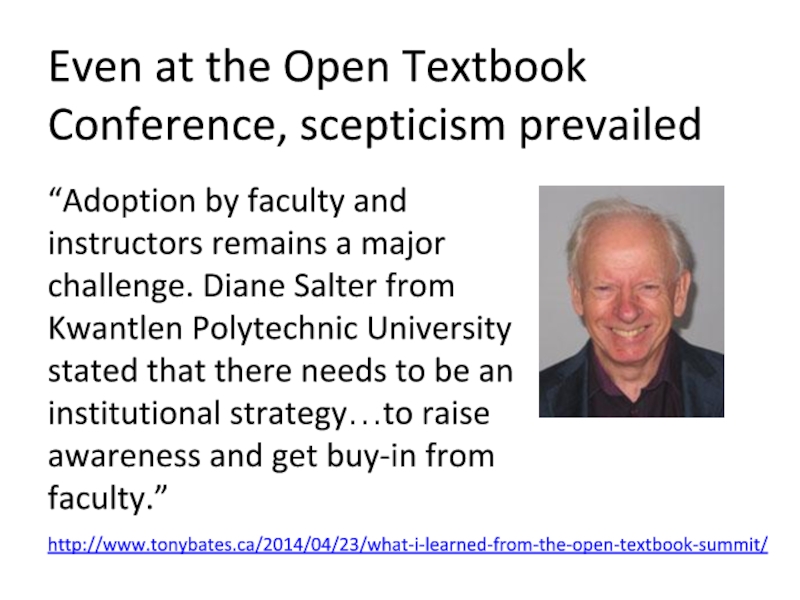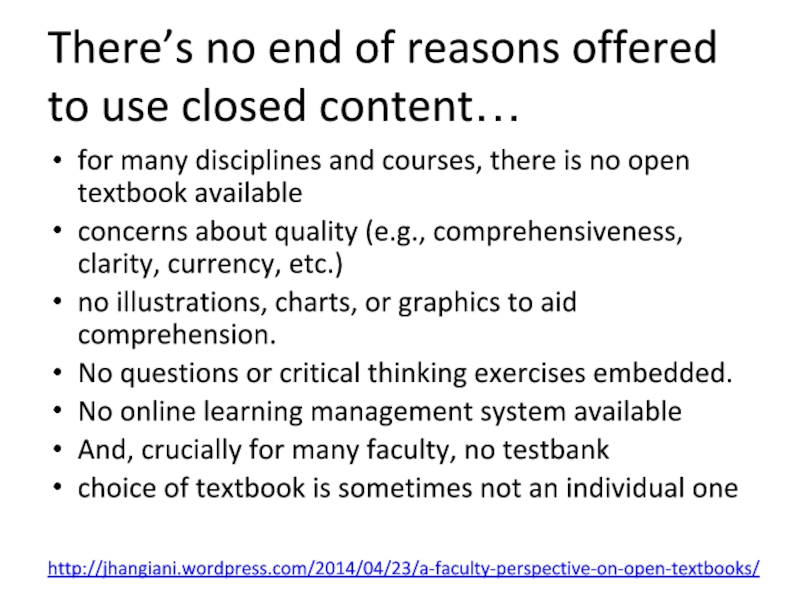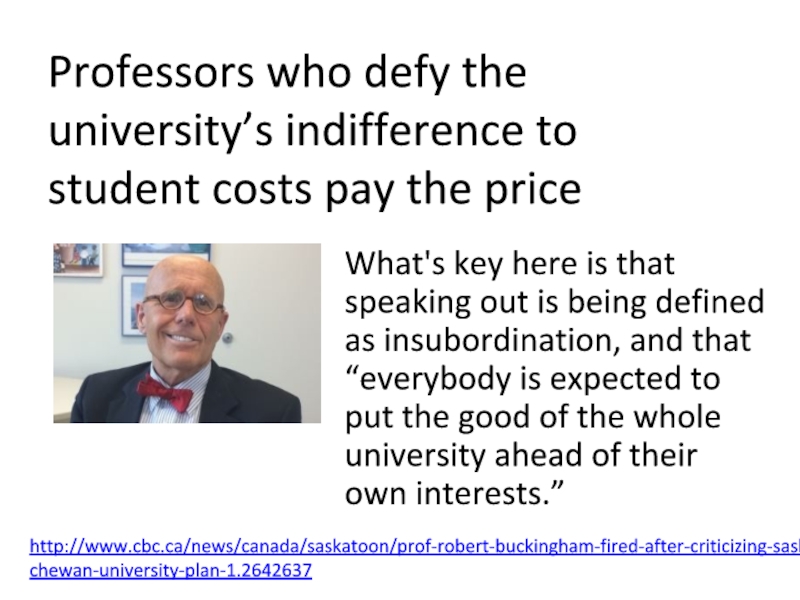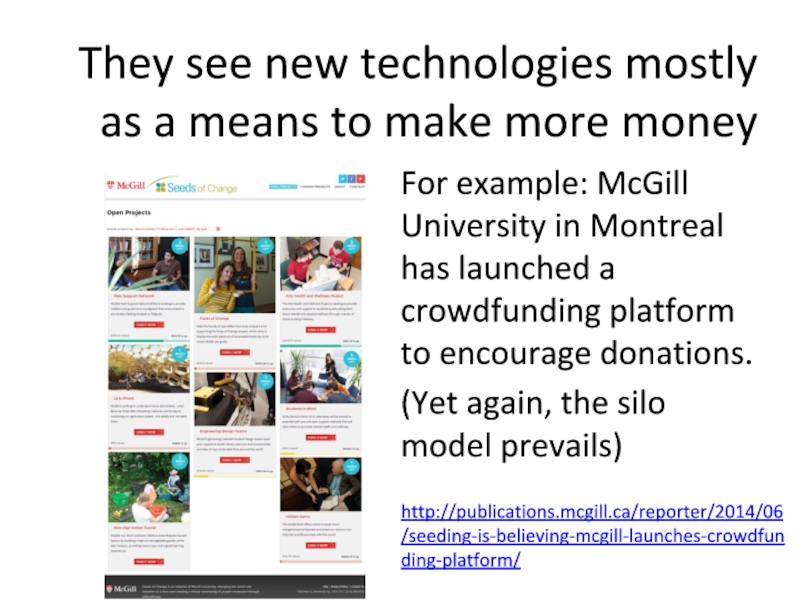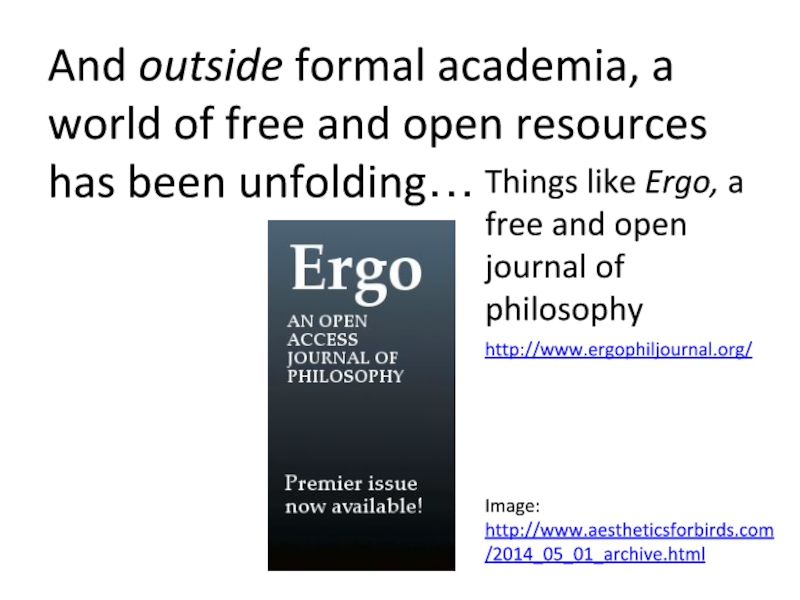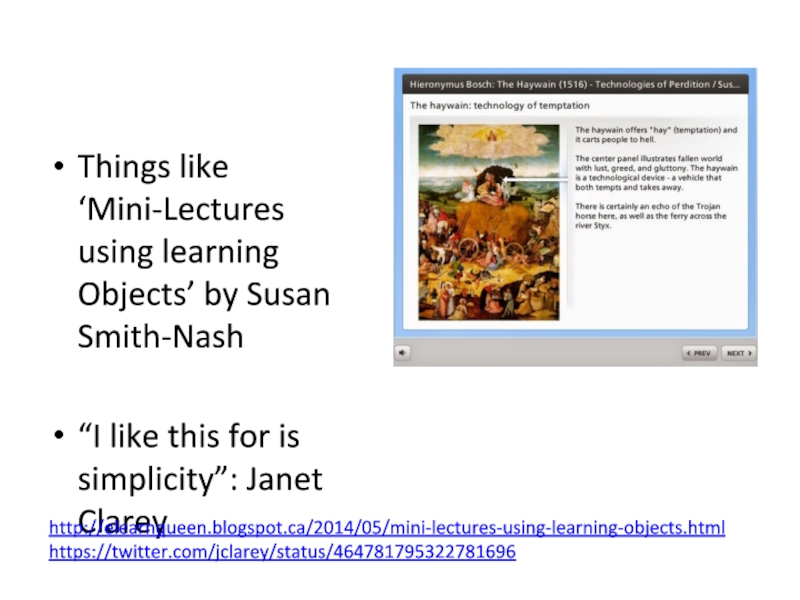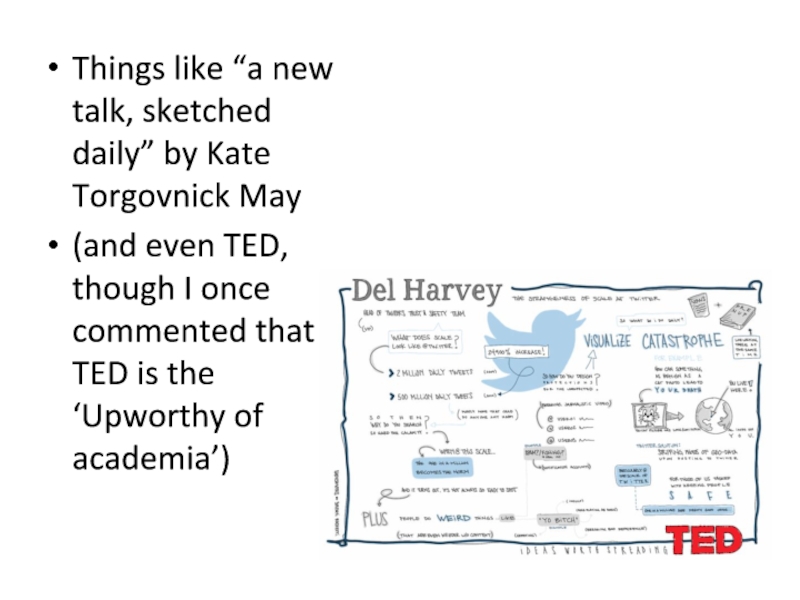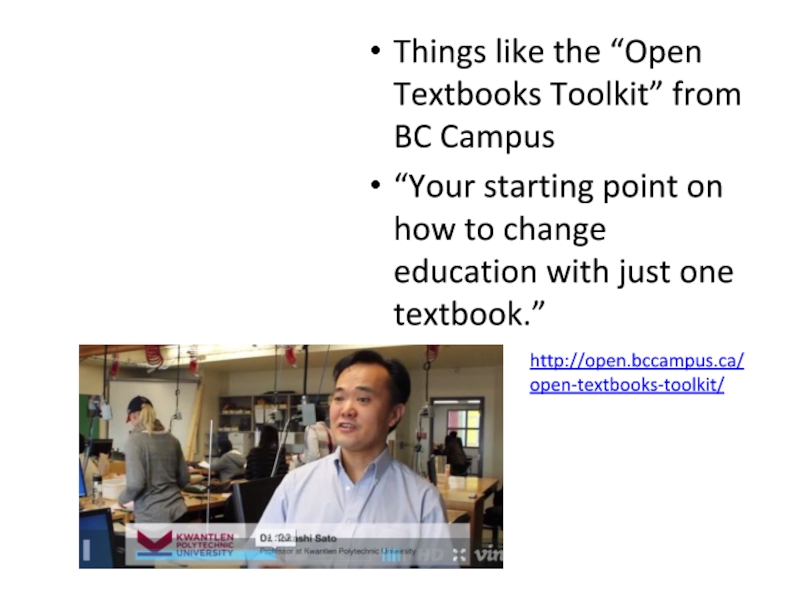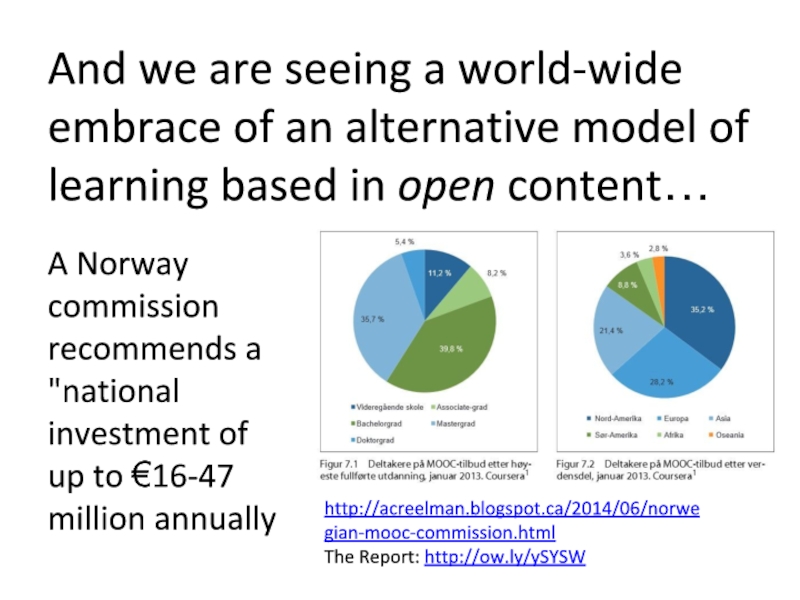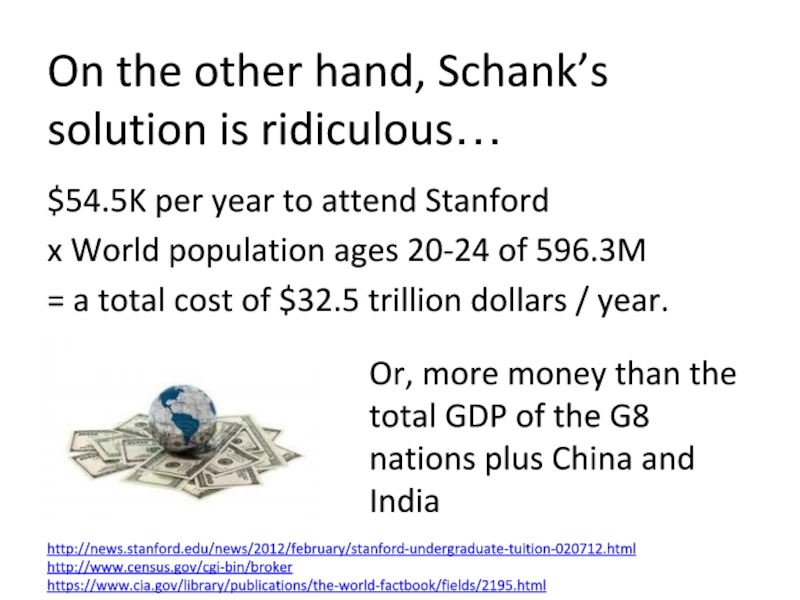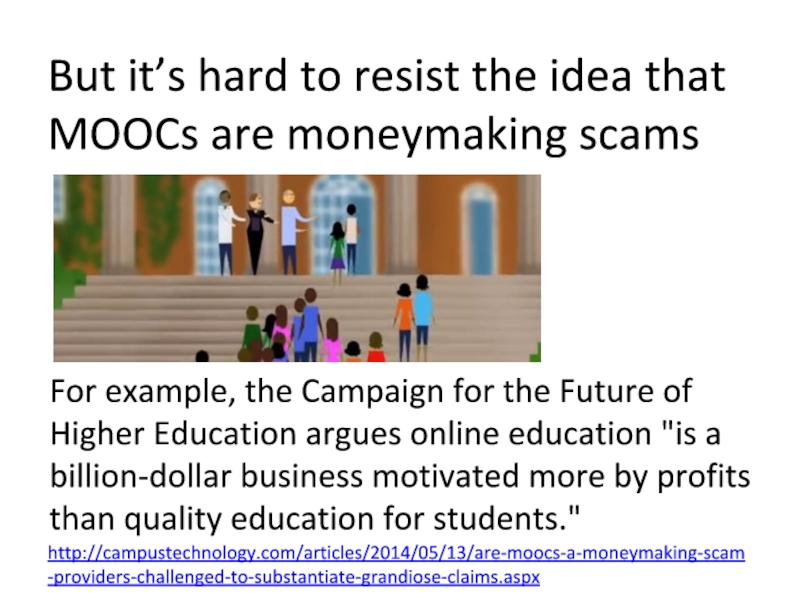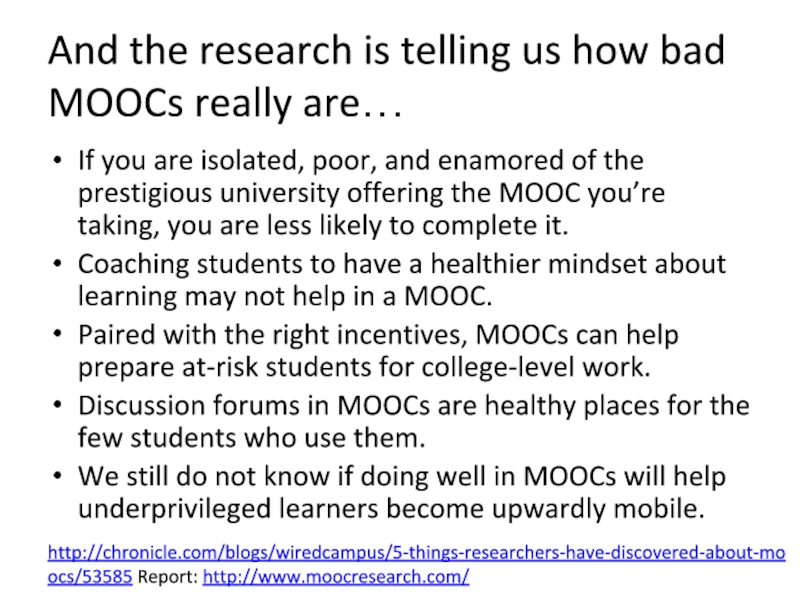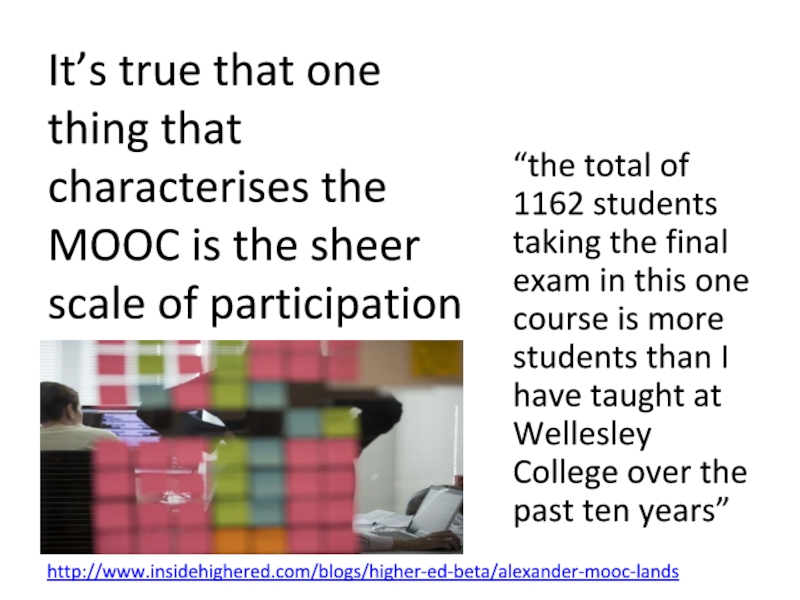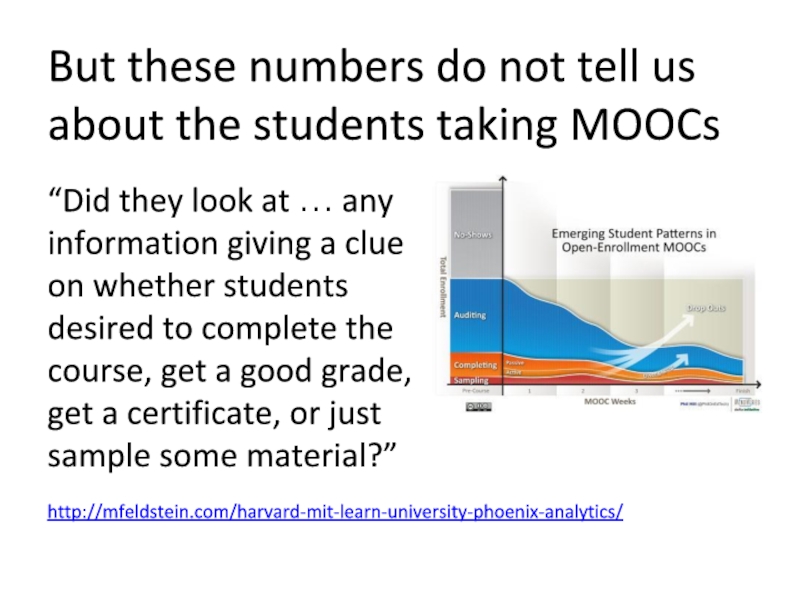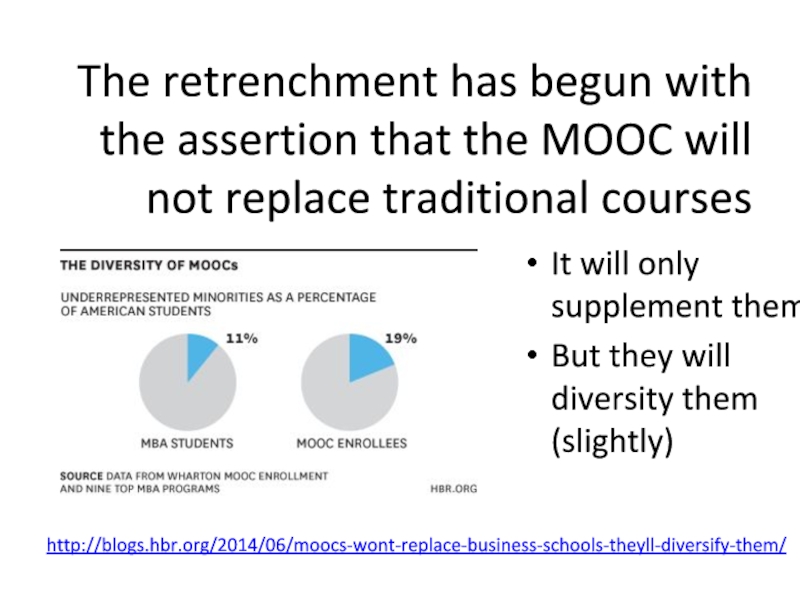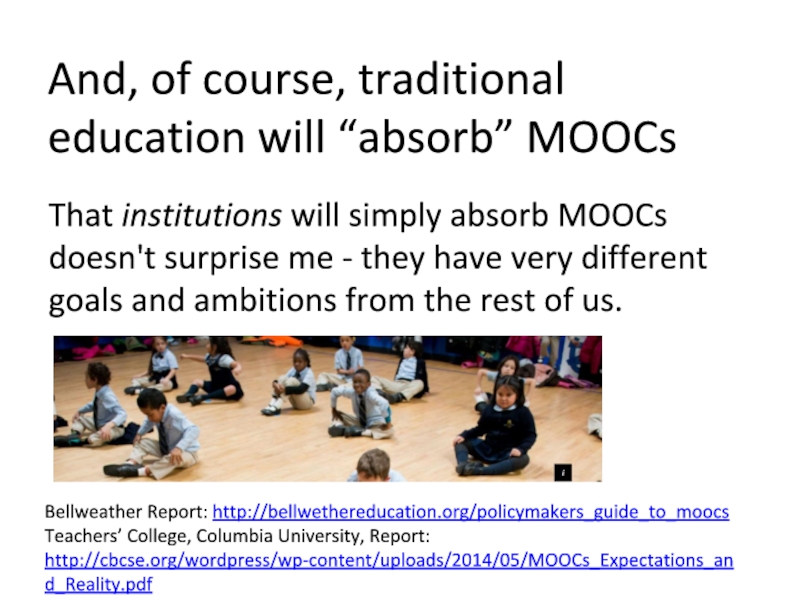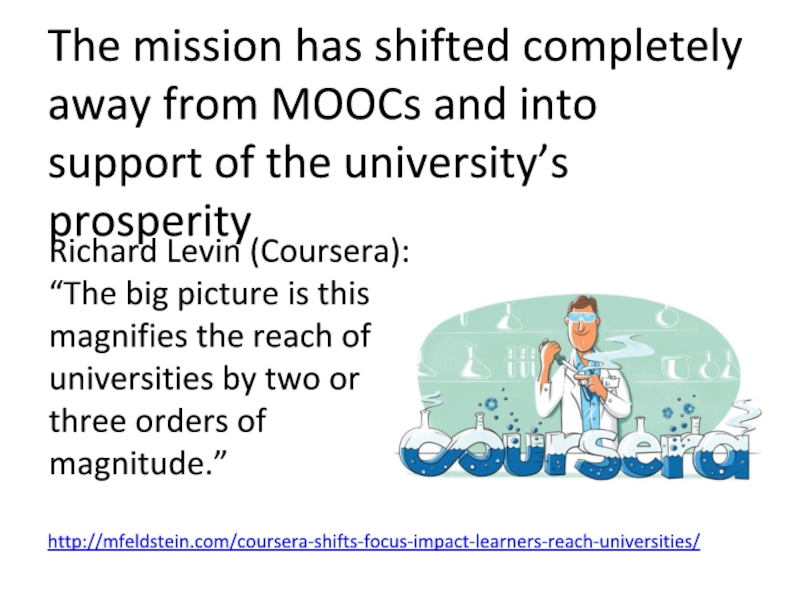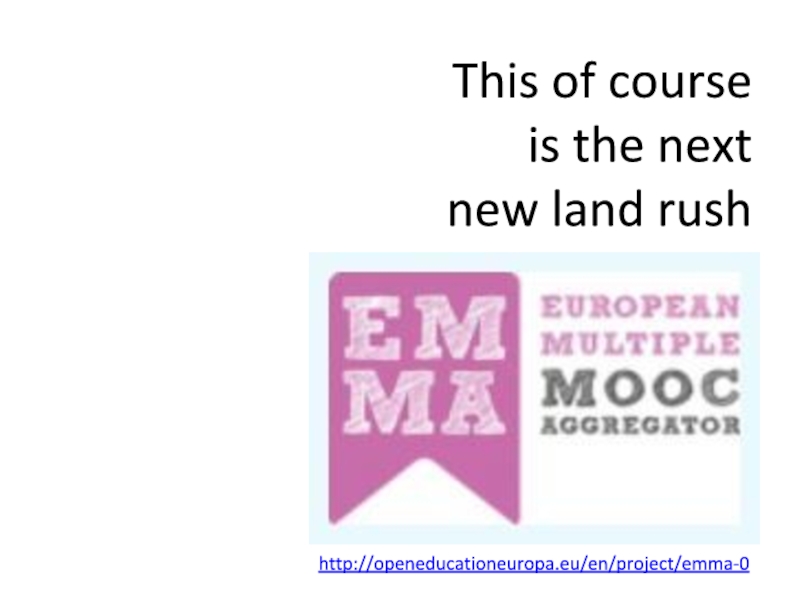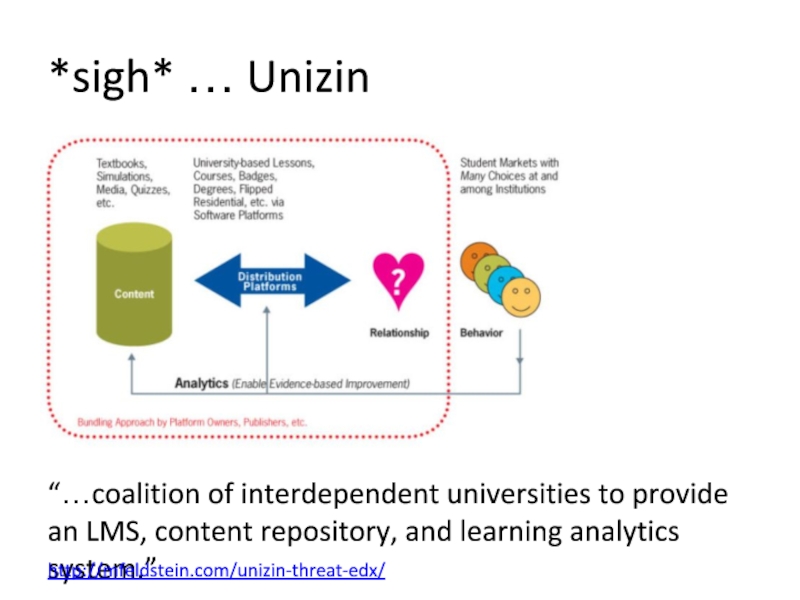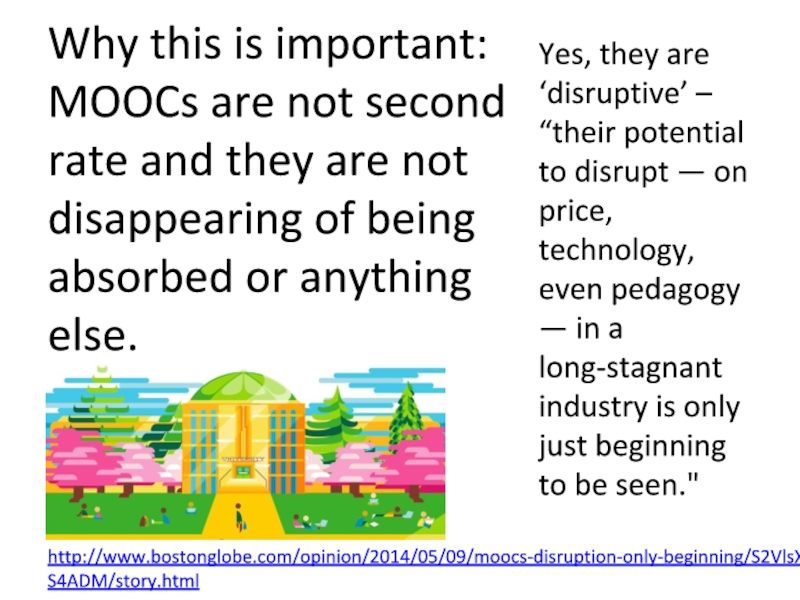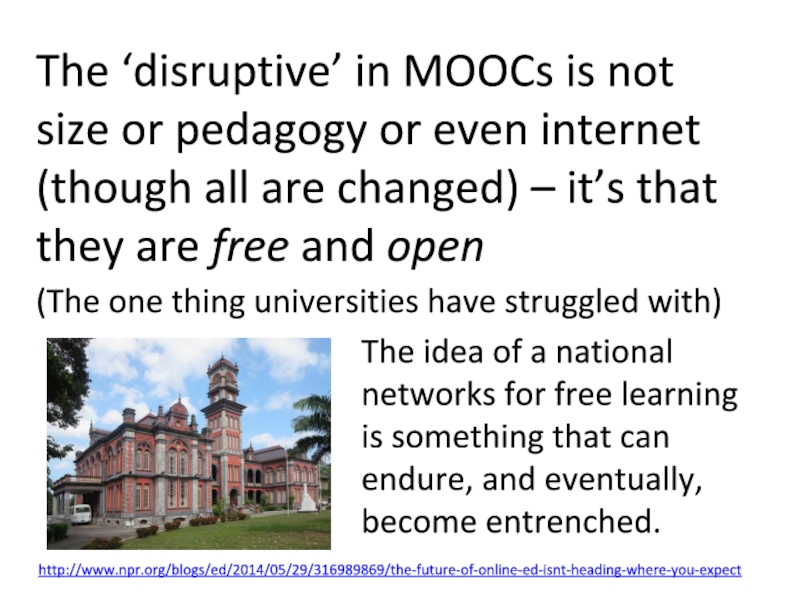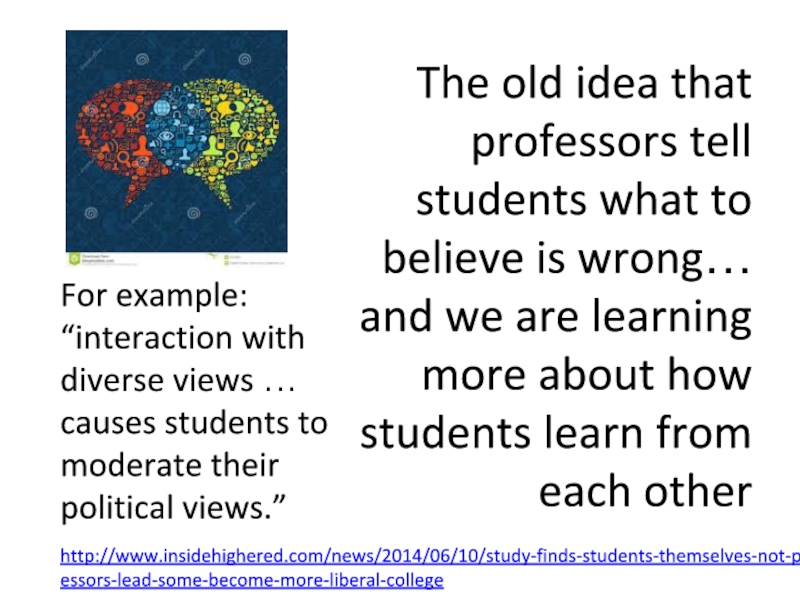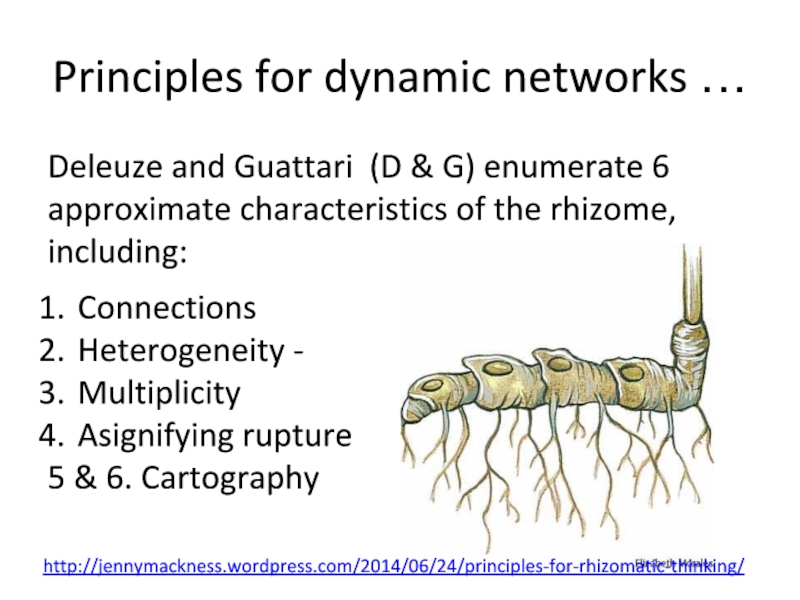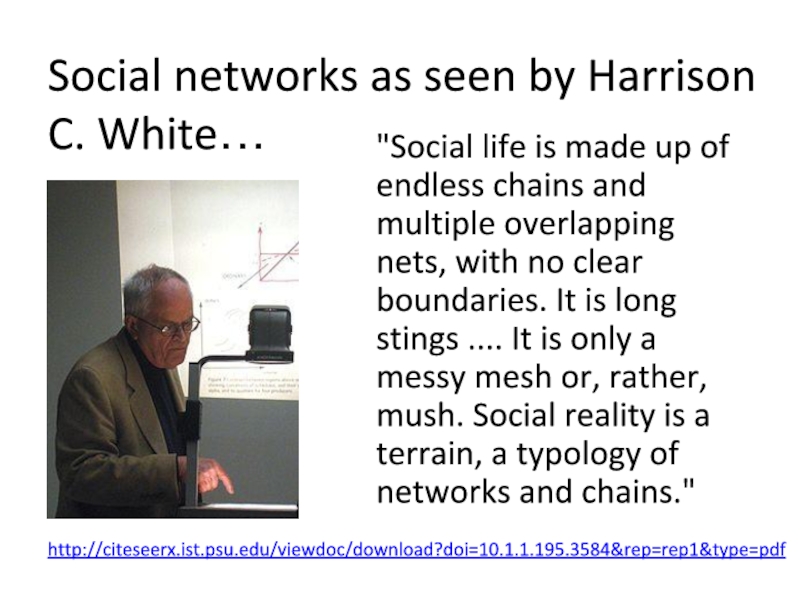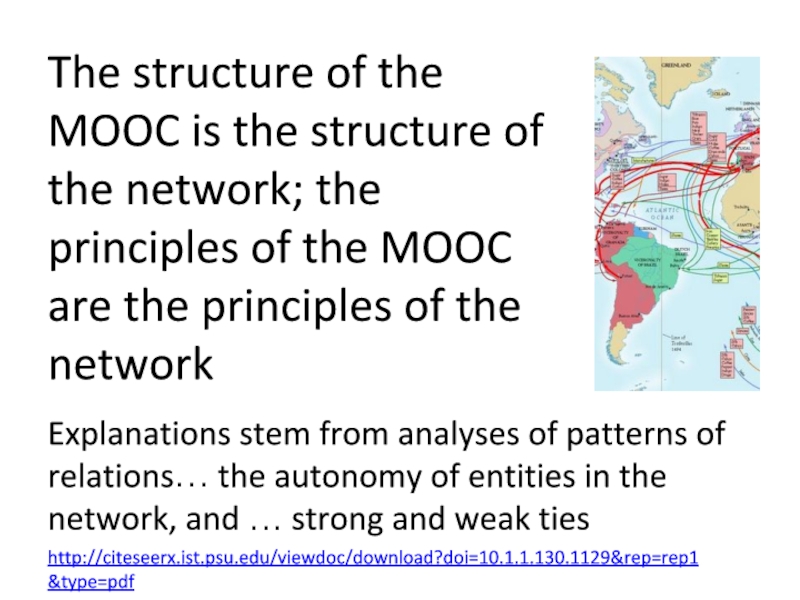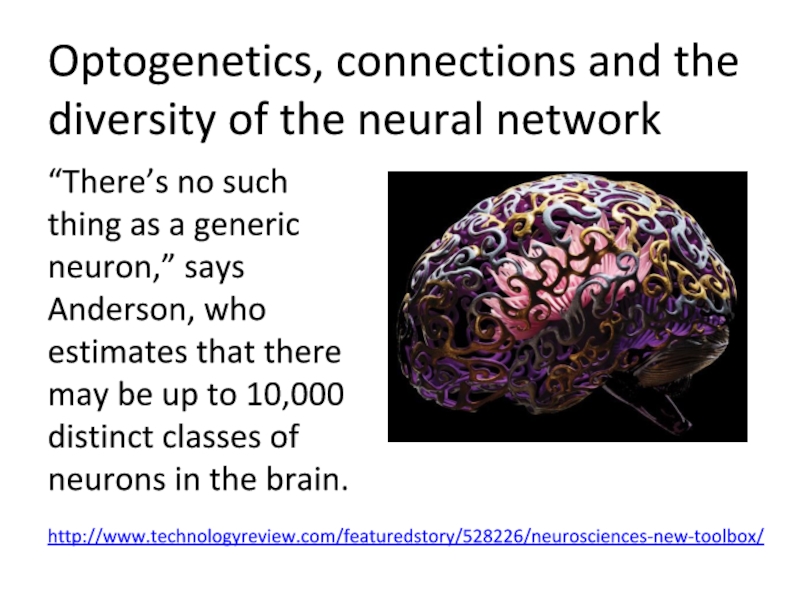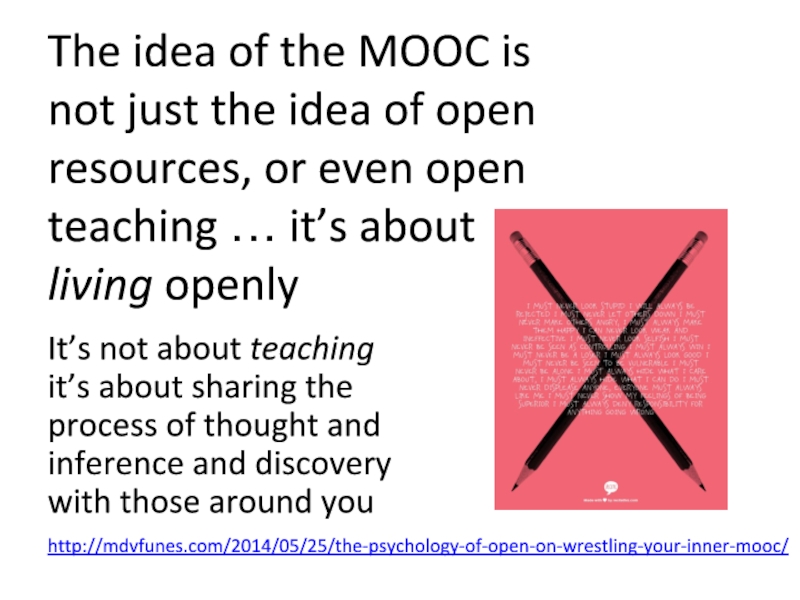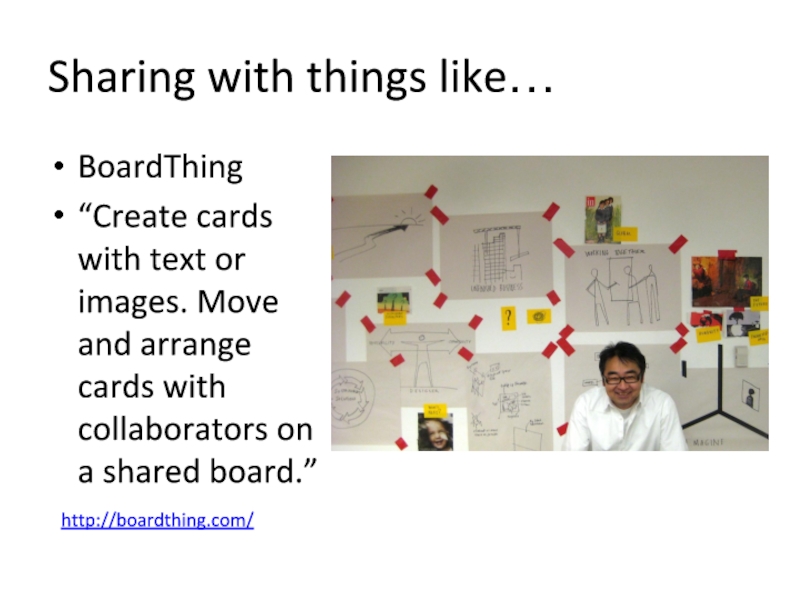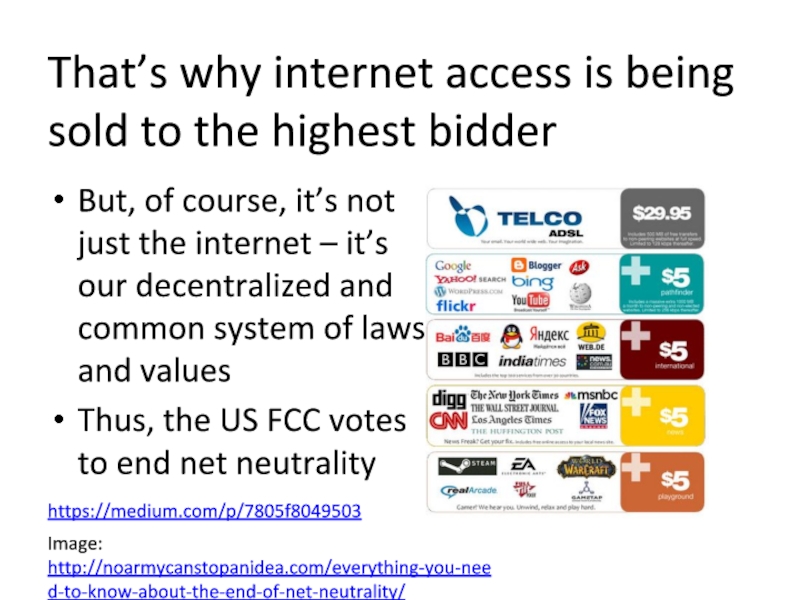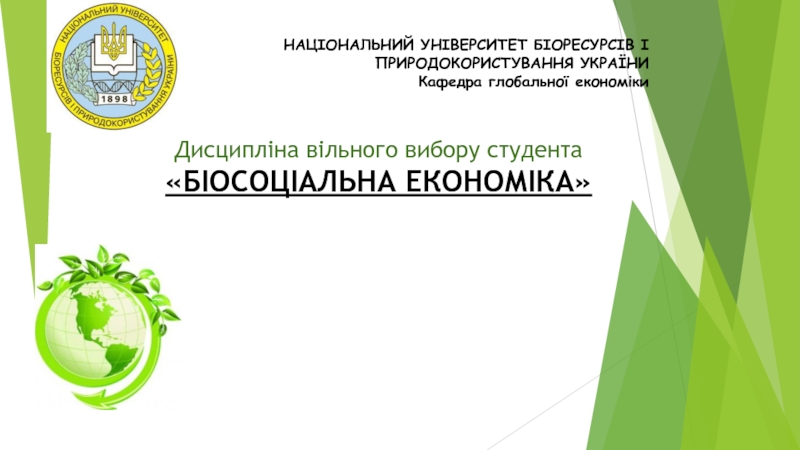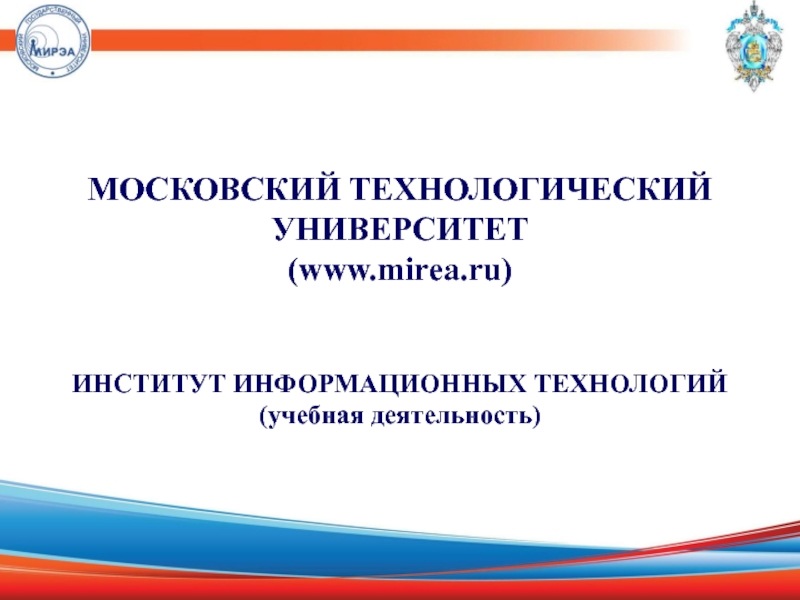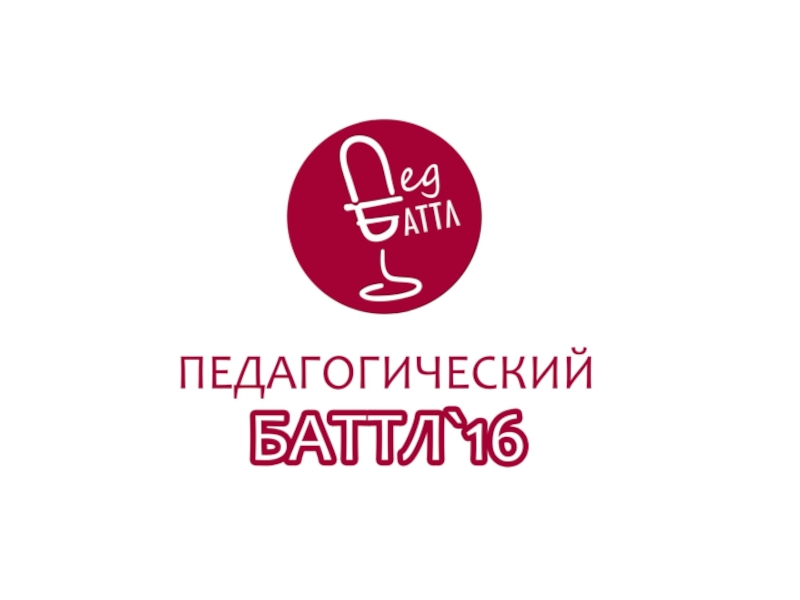- Главная
- Разное
- Дизайн
- Бизнес и предпринимательство
- Аналитика
- Образование
- Развлечения
- Красота и здоровье
- Финансы
- Государство
- Путешествия
- Спорт
- Недвижимость
- Армия
- Графика
- Культурология
- Еда и кулинария
- Лингвистика
- Английский язык
- Астрономия
- Алгебра
- Биология
- География
- Детские презентации
- Информатика
- История
- Литература
- Маркетинг
- Математика
- Медицина
- Менеджмент
- Музыка
- МХК
- Немецкий язык
- ОБЖ
- Обществознание
- Окружающий мир
- Педагогика
- Русский язык
- Технология
- Физика
- Философия
- Химия
- Шаблоны, картинки для презентаций
- Экология
- Экономика
- Юриспруденция
Beyond Free: Open Learning in a Networked World презентация
Содержание
- 1. Beyond Free: Open Learning in a Networked World
- 2. What is the problem for which MOOCs
- 3. What is the problem MOOCs were designed
- 4. We have to find innovative ways of
- 5. Who gets to graduate? "whether a student
- 6. What is the problem for which colleges
- 7. Why they are running MOOCs? What are
- 8. Meanwhile, the denials that cost is even
- 9. We’re told outright that money is not
- 10. But for many, cost is the problem
- 11. And debt, an even bigger problem http://www.aft.org/pdfs/highered/BorrowingAgainstFuture0514.pdf
- 12. Not only students are hurt, so are
- 13. Meanwhile, the benefits of digital resources never
- 14. That’s one cost even universities agree is
- 15. Of course, the journals don’t want to
- 16. So we see calls to recognize alternative
- 17. 20 years ago: the “subversive proposal” http://users.ecs.soton.ac.uk/harnad/Tp/Milestones/sld001.htm http://poynder.blogspot.ca/2014/06/the-subversive-proposal-at-20.html
- 18. The growth of a movement “What drives
- 19. No coincidence that WWW-based was created 20
- 20. … meanwhile, the benefits of web-based courses
- 21. Calling it a ‘patent thicket’ is more
- 22. The phenomenon of enclosure threatens the common
- 23. … and it’s going to get worse
- 24. Content providers do not want people to
- 25. … and their priorities are not our
- 26. The resistance of academic staff to open
- 27. Even at the Open Textbook Conference, scepticism
- 28. There’s no end of reasons offered to
- 29. Professors who defy the university’s indifference to
- 30. Universities, meanwhile, disguise the unsustainable model by
- 31. And they priced online learning using the
- 32. They see new technologies mostly as a
- 33. While the university fundraisers pursue parochial interests,
- 34. Open access makes a massive economic difference
- 35. Creative Commons: the license is a patch,
- 36. And outside formal academia, a world of
- 37. Things like ‘Mini-Lectures using learning Objects’ by
- 38. Things like “a new talk, sketched daily”
- 39. Things like the “Open Textbooks Toolkit” from
- 40. We are seeing what Martin Weller has
- 41. Do we dare imagine a world of
- 42. And we are seeing a world-wide embrace
- 43. But there’s nothing that can’t be corrupted…
- 44. The free online lessons can be far
- 45. Don’t think that traditional universities are immune
- 46. On the other hand, Schank’s solution is
- 47. But it’s hard to resist the idea
- 48. And the research is telling us how
- 49. But what sort of MOOC is this
- 50. We need to understand that MOOCs are
- 51. It’s true that one thing that characterises
- 52. But these numbers do not tell us
- 53. That said, other research shows that the
- 54. The retrenchment has begun with the assertion
- 55. And, of course, traditional education will “absorb”
- 56. The mission has shifted completely away from
- 57. They want to build a marketplace (and
- 58. This of course is the next new land rush http://openeducationeuropa.eu/en/project/emma-0
- 59. *sigh* … Unizin “…coalition of interdependent universities
- 60. Why this is important: MOOCs are not
- 61. The ‘disruptive’ in MOOCs is not size
- 62. We’re beginning to see the importance of
- 63. But why design a hybrid? "Normative communicative
- 64. Let’s build mesh networks of people instead…
- 65. Open content + conversations = learning networks
- 66. The old idea that professors tell students
- 67. Principles for dynamic networks … Deleuze and
- 68. Social networks as seen by Harrison C.
- 69. The structure of the MOOC is the
- 70. Optogenetics, connections and the diversity of the
- 71. Far from curriculum, we should be emphasizing diversity, experience and autonomy in learning http://www.macleans.ca/society/health/bringing-mindfulness-to-the-school-curriculum/
- 72. The idea of the MOOC is not
- 73. Sharing with things like… BoardThing “Create cards
- 74. Things like… MOOCopoly, the game Alan
- 75. The future of open is decentralized -
- 76. That’s why internet access is being sold
- 77. The open content movement is beginning to
- 78. We need to be open, not just
- 79. Open content, open access, open learning… these
- 80. Stephen Downes http://www.downes.ca
Слайд 1Beyond Free: Open Learning in a Networked World
for APT 2014 (8th
Stephen Downes
Слайд 2What is the problem for which MOOCs are the solution?
Diana Laurillard:
the
"The problem MOOCs succeed in solving is: to provide free university teaching for highly qualified professionals."
https://newsletter.alt.ac.uk/2014/06/what-is-the-problem-for-which-moocs-are-the-solution/
Image: http://www.londoninternational.ac.uk/community/londonconnection/articles/qa/london-connection-qa-professor-diana-laurillard
Слайд 3What is the problem MOOCs were designed to solve?
Laurillard writes, "by
At $50K per teacher, that's an additional $80 billion in salaries
http://unesdoc.unesco.org/images/0022/002256/225660e.pdf
Image: http://www.thetimes.co.uk/tto/business/industries/publicsector/article3410805.ece
Слайд 4We have to find innovative ways of teaching…
… says Laurillard. But
Because the problem isn’t design; the problem is cost and access. Design is only one way of looking at the problem.
Image: https://www.uwstout.edu/lib/services/access.cfm
Слайд 5Who gets to graduate?
"whether a student graduates or not seems to
“it will always be the case that the kids who have need are going to have been denied a lot of the academic preparation and opportunities for identity formation that the affluent kids have been given.”
Paul Tough, New York Times, May 27, 2014
http://www.nytimes.com/2014/05/18/magazine/who-gets-to-graduate.html?_r=0
Слайд 6What is the problem for which colleges and universities are the
Hint: if we look at why they are starting MOOCs, cost and access aren’t very high on the list…
Слайд 7Why they are running MOOCs? What are their issues?
Extend reach and
Build and maintain brand
Reduce costs, raise revenues
Improve educational outcomes
Research and innovation in teaching and learning
http://cbcse.org/wordpress/wp-content/uploads/2014/05/MOOCs_Expectations_and_Reality.pdf
Слайд 8Meanwhile, the denials that cost is even a problem
“the benefits of
“financial aid programs drive college prices higher”
Student debt overstated
http://www.ny.frb.org/research/current_issues/ci20-3.pdf
http://www.aei.org/events/2014/06/25/policies-to-puncture-the-student-loan-bubble/
http://www.nytimes.com/2014/06/24/upshot/the-reality-of-student-debt-is-different-from-the-cliches.html
Слайд 9We’re told outright that money is not the problem
“This challenge is
http://www.theglobeandmail.com/news/national/education/education-lab/more-money-wont-fix-need-for-change-in-education/article19309812/
Слайд 10But for many, cost is the problem
“In general, university participation rates
http://www.ousa.ca/2014/06/10/experiential-learning-opportunities-created-equal/
Слайд 11And debt, an even bigger problem
http://www.aft.org/pdfs/highered/BorrowingAgainstFuture0514.pdf
Слайд 12Not only students are hurt, so are their families
“the data suggests
http://www.casa-acae.com/wp/wp-content/uploads/2014/06/CASAJune5th-NewDataCostEducation.pdf
Image: http://tcf.org/blog/detail/graph-student-debt-the-trillion-dollar-threat-to-the-american-middle-class
Слайд 13Meanwhile, the benefits of digital resources never materialized…
11 publishers are raising
http://chronicle.com/article/College-Libraries-Push-Back-as/147085/ Image: http://www.dailytech.com/Amazon+Flexes+Its+Muscles+to+Punish+Unruly+Publisher+Hatchette/article34968.htm
Слайд 14That’s one cost even universities agree is a problem
“Journals published by
http://www.theguardian.com/science/2014/jun/16/universities-get-poor-value-academic-journal-publishing-firms
Слайд 15Of course, the journals don’t want to publish this sort of
… and when they do (only after being threatened with mass resignations) they publish the data with a disclaimer suggesting it is inaccurate
http://www.timeshighereducation.co.uk/news/resignations-threat-over-taylor-and-francis-censorship/2013752.article
The article: http://files.figshare.com/1521805/Publisher__be_damned_.pdf
Слайд 16So we see calls to recognize alternative forms of literature
‘Grey Literature’
"research
http://greyguide.isti.cnr.it/include/pisadeclarationmay2014.pdf
http://tebm-libs.wikispaces.com/file/view/Grey+Literature.ppt
Слайд 1720 years ago: the “subversive proposal”
http://users.ecs.soton.ac.uk/harnad/Tp/Milestones/sld001.htm
http://poynder.blogspot.ca/2014/06/the-subversive-proposal-at-20.html
Слайд 18The growth of a movement
“What drives (Subbiah) Arunachalam is a firm
http://poynder.blogspot.ca/2014/06/open-access-in-india-q-with-subbiah.html
http://en.wikipedia.org/wiki/Subbiah_Arunachalam
Слайд 19No coincidence that WWW-based was created 20 years ago as well
Hill:
http://mfeldstein.com/internet-based-online-education-turns-20-summer/
http://faculty.education.ufl.edu/Melzie/Distance/Virtual%20Summer%20School%20Project
Слайд 20… meanwhile, the benefits of web-based courses were never realized
I once
http://www.hackeducation.com/2014/06/22/ed-tech-patents/
Слайд 21Calling it a ‘patent thicket’ is more than just a slight
It’s way worse than that
http://www.wired.co.uk/news/archive/2014-06/02/pi-trademark-usa
Image: screen capture from http://trademarks.justia.com/857/85/pi-85785006.html
Слайд 22The phenomenon of enclosure threatens the common heritage we thought we
Study: “... of the 50 titles that had been digitized, only three were hosted by repositories that do not restrict any type of subsequent use”
Image: http://www.publicdomaintreasurehunter.com/2009/01/10/use-public-domain-short-stories-for-blogs/ (who knows where the original was)
http://firstmonday.org/ojs/index.php/fm/article/view/4975/4089
Слайд 23… and it’s going to get worse
Content companies have been creating
https://blog.mozilla.org/blog/2014/05/14/drm-and-the-challenge-of-serving-users/
Image: http://forums.crackberry.com/blackberry-10-apps-f274/amazon-instant-videos-fully-working-browser-849796/
Слайд 24Content providers do not want people to have free and open
Digital News Report 2014: “We are seeing that the next five years will see a major revenue shift for news agencies. This is especially relevant given the reluctance of people to pay for news.”
http://www.digitalnewsreport.org/
Слайд 25… and their priorities are not our priorities
This includes (especially) universities…
As
http://www.cbc.ca/asithappens/features/2014/06/06/university-of-alberta-president-salary-letter/
Слайд 26The resistance of academic staff to open content is manifest
Report from
Active change blocking and passive forms of intransigence
Sharing of resources and artifacts happened only on Moodle, which is a closed system
No time to effectively learn about and embed open content
http://terrya.edublogs.org/2014/04/23/greewich-connect-connects-with-us-on-a-number-of-levels/
Report: http://conference.ocwconsortium.org/2014/wp-content/uploads/2014/02/Paper_30.pdf
Слайд 27Even at the Open Textbook Conference, scepticism prevailed
“Adoption by faculty and
http://www.tonybates.ca/2014/04/23/what-i-learned-from-the-open-textbook-summit/
Слайд 28There’s no end of reasons offered to use closed content…
for many
concerns about quality (e.g., comprehensiveness, clarity, currency, etc.)
no illustrations, charts, or graphics to aid comprehension.
No questions or critical thinking exercises embedded.
No online learning management system available
And, crucially for many faculty, no testbank
choice of textbook is sometimes not an individual one
http://jhangiani.wordpress.com/2014/04/23/a-faculty-perspective-on-open-textbooks/
Слайд 29Professors who defy the university’s indifference to student costs pay the
What's key here is that speaking out is being defined as insubordination, and that “everybody is expected to put the good of the whole university ahead of their own interests.”
http://www.cbc.ca/news/canada/saskatoon/prof-robert-buckingham-fired-after-criticizing-saskatchewan-university-plan-1.2642637
Слайд 30Universities, meanwhile, disguise the unsustainable model by employing poorly paid temporary
"Our marginalization, meager pay and lack of job security… all contribute to a culture of paranoia and enmity."
http://drshahsofficehours.wordpress.com/2014/06/05/my-last-day-as-a-professor/
Image: http://www.orderofeducation.com/con-job-new-documentary-adjunct-labor/
Слайд 31And they priced online learning using the same model they used
I don't see why university administrators could think that "unapologetically" pricing courses at $1400 per credit hour for online learning could possibly work.
http://www.insidehighered.com/news/2014/05/01/collaboration-or-lack-thereof-behind-semester-online-collapse
Слайд 32They see new technologies mostly as a means to make more
For example: McGill University in Montreal has launched a crowdfunding platform to encourage donations.
(Yet again, the silo model prevails)
http://publications.mcgill.ca/reporter/2014/06/seeding-is-believing-mcgill-launches-crowdfunding-platform/
Слайд 33While the university fundraisers pursue parochial interests, open content advocates create
Eg. Confederation of Open Access Repositories (COAR) has undertaken an initiative to align open access repositories.
https://www.coar-repositories.org/files/Aligning-Repository-Networks-Meeting-Report.pdf
Слайд 34Open access makes a massive economic difference
Ross Dawson: The potential value
http://rossdawsonblog.com/weblog/archives/2014/06/impact-open-data-government-economic-growth.html
Слайд 35Creative Commons: the license is a patch, not a fix –
http://teamopen.cc/thefuture/
Слайд 36And outside formal academia, a world of free and open resources
Things like Ergo, a free and open journal of philosophy
http://www.ergophiljournal.org/
Image: http://www.aestheticsforbirds.com/2014_05_01_archive.html
Слайд 37Things like ‘Mini-Lectures using learning Objects’ by Susan Smith-Nash
“I like this
http://elearnqueen.blogspot.ca/2014/05/mini-lectures-using-learning-objects.html
https://twitter.com/jclarey/status/464781795322781696
Слайд 38Things like “a new talk, sketched daily” by Kate Torgovnick May
(and
Слайд 39Things like the “Open Textbooks Toolkit” from BC Campus
“Your starting point
http://open.bccampus.ca/open-textbooks-toolkit/
Слайд 40We are seeing what Martin Weller has called ‘the open virus’…
"It
http://nogoodreason.typepad.co.uk/no_good_reason/2014/05/the-open-virus.html
Слайд 41Do we dare imagine a world of open resources beyond ‘courseware’? Beyond
Maybe. The OpenCourseWare Consortium has changed its name to The Open Education Consortium.
http://www.openedconsortium.org/
Слайд 42And we are seeing a world-wide embrace of an alternative model
A Norway commission recommends a "national investment of up to €16-47 million annually
http://acreelman.blogspot.ca/2014/06/norwegian-mooc-commission.html
The Report: http://ow.ly/ySYSW
Слайд 43But there’s nothing that can’t be corrupted…
For example: a company that
http://chronicle.com/blogs/wiredcampus/online-upstarts-goal-mooc-lectures-that-go-viral/53539 Image: http://mruniversity.com/courses/everyday-economics
Слайд 44The free online lessons can be far from benign
This is from
http://kidscreen.com/2014/04/24/why-disney-is-pushing-further-into-the-preschool-mobile-space/
Слайд 45Don’t think that traditional universities are immune from the temptation. Events
Roger Schank: “I am sure, that Stanford itself won’t give the stuff they produce to it’s own students. No one calls this racism (or classism), but it is education for poor people, just as Wal-Mart is focused on poor people. “
http://educationoutrage.blogspot.ca/2014/06/stanford-decides-to-be-wal-mart-doesnt.html
Слайд 46On the other hand, Schank’s solution is ridiculous…
$54.5K per year to
x World population ages 20-24 of 596.3M
= a total cost of $32.5 trillion dollars / year.
Or, more money than the total GDP of the G8 nations plus China and India
http://news.stanford.edu/news/2012/february/stanford-undergraduate-tuition-020712.html http://www.census.gov/cgi-bin/broker
https://www.cia.gov/library/publications/the-world-factbook/fields/2195.html
Слайд 47But it’s hard to resist the idea that MOOCs are moneymaking
For example, the Campaign for the Future of Higher Education argues online education "is a billion-dollar business motivated more by profits than quality education for students."
http://campustechnology.com/articles/2014/05/13/are-moocs-a-moneymaking-scam-providers-challenged-to-substantiate-grandiose-claims.aspx
Слайд 48And the research is telling us how bad MOOCs really are…
If
Coaching students to have a healthier mindset about learning may not help in a MOOC.
Paired with the right incentives, MOOCs can help prepare at-risk students for college-level work.
Discussion forums in MOOCs are healthy places for the few students who use them.
We still do not know if doing well in MOOCs will help underprivileged learners become upwardly mobile.
http://chronicle.com/blogs/wiredcampus/5-things-researchers-have-discovered-about-moocs/53585 Report: http://www.moocresearch.com/
Слайд 49But what sort of MOOC is this research criticizing?
The sort of
… who gives us the impression he’s not sure what software like EdX actually does
http://mfeldstein.com/partial-transcript-richard-levin-new-coursera-ceo-charlie-rose/
Слайд 50We need to understand that MOOCs are different, that they’re not
Drop the lable ‘dropout’ - characterize users by the impact they have on the system: uploaders, commenters, subscribers, viewers, and lurkers.
http://chronicle.com/blogs/wiredcampus/study-of-moocs-suggests-dropping-the-label-dropout/53421?cid=at&utm_source=at&utm_medium=en
Слайд 51It’s true that one thing that characterises the MOOC is the
“the total of 1162 students taking the final exam in this one course is more students than I have taught at Wellesley College over the past ten years”
http://www.insidehighered.com/blogs/higher-ed-beta/alexander-mooc-lands
Слайд 52But these numbers do not tell us about the students taking
“Did they look at … any information giving a clue on whether students desired to complete the course, get a good grade, get a certificate, or just sample some material?”
http://mfeldstein.com/harvard-mit-learn-university-phoenix-analytics/
Слайд 53That said, other research shows that the bulk of MOOCs are
http://www.moocresearch.com/reports
Слайд 54The retrenchment has begun with the assertion that the MOOC will
It will only supplement them
But they will diversity them (slightly)
http://blogs.hbr.org/2014/06/moocs-wont-replace-business-schools-theyll-diversify-them/
Слайд 55And, of course, traditional education will “absorb” MOOCs
That institutions will simply
Bellweather Report: http://bellwethereducation.org/policymakers_guide_to_moocs
Teachers’ College, Columbia University, Report: http://cbcse.org/wordpress/wp-content/uploads/2014/05/MOOCs_Expectations_and_Reality.pdf
Слайд 56The mission has shifted completely away from MOOCs and into support
Richard Levin (Coursera): “The big picture is this magnifies the reach of universities by two or three orders of magnitude.”
http://mfeldstein.com/coursera-shifts-focus-impact-learners-reach-universities/
Слайд 57They want to build a marketplace (and worse, they think it’s
“Brilliance struck. We call it Canvas Catalog.”
http://voice.instructure.com/blog/bid/346982/Brilliance-struck-We-call-it-Canvas-Catalog
Слайд 59*sigh* … Unizin
“…coalition of interdependent universities to provide an LMS, content
http://mfeldstein.com/unizin-threat-edx/
Слайд 60Why this is important: MOOCs are not second rate and they
Yes, they are ‘disruptive’ – “their potential to disrupt — on price, technology, even pedagogy — in a long-stagnant industry is only just beginning to be seen."
http://www.bostonglobe.com/opinion/2014/05/09/moocs-disruption-only-beginning/S2VlsXpK6rzRx4DMrS4ADM/story.html
Слайд 61The ‘disruptive’ in MOOCs is not size or pedagogy or even
(The one thing universities have struggled with)
http://www.npr.org/blogs/ed/2014/05/29/316989869/the-future-of-online-ed-isnt-heading-where-you-expect
The idea of a national networks for free learning is something that can endure, and eventually, become entrenched.
Слайд 62We’re beginning to see the importance of this in Matt Crosslin’s
The idea of ‘free and open’ is linked to the importance of dialogue and interaction
http://www.edugeekjournal.com/2014/05/04/designing-a-dual-layer-cmoocxmooc/
http://www.edugeekjournal.com/2014/06/07/communal-constructivism-and-dual-layer-moocs/
Слайд 63But why design a hybrid?
"Normative communicative actions are those that communicate
"Strategic communicative actions … where specific reified knowledge is transferred to the learner.
"Constative communicative actions are debates, arguments, and discourses …
"Dramaturgical communicative actions are those that allow for expression…”
http://www.edugeekjournal.com/2014/05/07/why-design-a-xmooc-cmooc-hybrid-ltca-theory/
Слайд 64Let’s build mesh networks of people instead…
“What could we actually do
http://cogdogblog.com/2014/05/08/mesh-networks-of-people/
Слайд 65Open content + conversations = learning networks
The Aboriginal Enhancement Schools Network
http://ineducation.ca/ineducation/article/view/136
Image: http://www.jenniferannaispighin.com/apps/photos/photo?photoid=58051954
Слайд 66The old idea that professors tell students what to believe is
For example: “interaction with diverse views … causes students to moderate their political views.”
http://www.insidehighered.com/news/2014/06/10/study-finds-students-themselves-not-professors-lead-some-become-more-liberal-college
Слайд 67Principles for dynamic networks …
Deleuze and Guattari (D & G) enumerate
Connections
Heterogeneity -
Multiplicity
Asignifying rupture
5 & 6. Cartography
http://jennymackness.wordpress.com/2014/06/24/principles-for-rhizomatic-thinking/
Слайд 68Social networks as seen by Harrison C. White…
"Social life is made
http://citeseerx.ist.psu.edu/viewdoc/download?doi=10.1.1.195.3584&rep=rep1&type=pdf
Слайд 69The structure of the MOOC is the structure of the network;
Explanations stem from analyses of patterns of relations… the autonomy of entities in the network, and … strong and weak ties
http://citeseerx.ist.psu.edu/viewdoc/download?doi=10.1.1.130.1129&rep=rep1&type=pdf
Слайд 70Optogenetics, connections and the diversity of the neural network
“There’s no such
http://www.technologyreview.com/featuredstory/528226/neurosciences-new-toolbox/
Слайд 71Far from curriculum, we should be emphasizing diversity, experience and autonomy
http://www.macleans.ca/society/health/bringing-mindfulness-to-the-school-curriculum/
Слайд 72The idea of the MOOC is not just the idea of
It’s not about teaching it’s about sharing the process of thought and inference and discovery with those around you
http://mdvfunes.com/2014/05/25/the-psychology-of-open-on-wrestling-your-inner-mooc/
Слайд 73Sharing with things like…
BoardThing
“Create cards with text or images. Move and
http://boardthing.com/
Слайд 74Things like…
MOOCopoly, the game
Alan Levine: “I came across a Monopoly template
http://cogdogblog.com/2014/05/03/moocopoly-the-game/
Слайд 75The future of open is decentralized - that’s why it is
“As a consequence, though, of this clampdown we are seeing the rise of genuinely distributed networks that circumvent attempts at control - things like BitTorrent, Bitcoin, DarkMarket, and now, MaidSafe, which allows users to share bandwidth and processing power”
http://www.dailydot.com/technology/decentralized-internet-future/
Слайд 76That’s why internet access is being sold to the highest bidder
But,
Thus, the US FCC votes to end net neutrality
https://medium.com/p/7805f8049503
Image: http://noarmycanstopanidea.com/everything-you-need-to-know-about-the-end-of-net-neutrality/
Слайд 77The open content movement is beginning to address open policy
Though I
http://openpolicynetwork.org/
Слайд 78We need to be open, not just in the big things,
Embargo periods, for example
https://www.coar-repositories.org/activities/advocacy-leadership/aligning-repository-networks-across-regions/statement-about-embargo-periods/
Слайд 79Open content, open access, open learning… these are not only a
they define democracy, and our system of free and open government depends upon them
http://www.jarche.com/2014/05/a-world-of-pervasive-networks/
